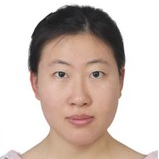Smartphone-Based Biosensors and Diagnostics
A special issue of Biosensors (ISSN 2079-6374). This special issue belongs to the section "Biosensor and Bioelectronic Devices".
Deadline for manuscript submissions: closed (31 August 2021) | Viewed by 6299
Special Issue Editors
Interests: imaging and sensing devices; point-of-care diagnostics; lab on a chip; nanoscience and nanoengineering; global health
Special Issues, Collections and Topics in MDPI journals
Special Issue Information
Dear Colleagues,
Over the past few decades, smartphone-based imaging and sensing platforms have emerged as promising alternatives for health monitoring and medical diagnostics, offering practical features such as portability and cost-effectiveness, particularly in regions with limited access to healthcare facilities. Many of these applications leverage the ever-increasing penetration of smartphones in our life and have significantly improved built-in modules of smartphones, such as the processor chip, complementary metal-oxide-semiconductor (CMOS) image sensor, and wireless connectivity. With the help of these embedded functions, smartphones have been coupled with various add-ons such as optical lenses and filters to bring a wide range of detection modalities, such as optical, electrochemical, and magnetic sensing, to the field. Images and videos captured by smartphone microscopy devices can be readily processed by custom developed smartphone applications for on-site bioanalysis.
In this Special Issue, we invite you to contribute original research articles and reviews on any aspects related to smartphone-based point-of-care diagnostics, including but not limited to device and assay development, time-dependent monitoring of health matrices, diagnosis of human diseases such as infectious diseases and cancer, as well as the detection of health-related threats in food or environmental samples.
Dr. Qingshan Wei
Dr. Yan Wang
Guest Editors
Manuscript Submission Information
Manuscripts should be submitted online at www.mdpi.com by registering and logging in to this website. Once you are registered, click here to go to the submission form. Manuscripts can be submitted until the deadline. All submissions that pass pre-check are peer-reviewed. Accepted papers will be published continuously in the journal (as soon as accepted) and will be listed together on the special issue website. Research articles, review articles as well as short communications are invited. For planned papers, a title and short abstract (about 100 words) can be sent to the Editorial Office for announcement on this website.
Submitted manuscripts should not have been published previously, nor be under consideration for publication elsewhere (except conference proceedings papers). All manuscripts are thoroughly refereed through a single-blind peer-review process. A guide for authors and other relevant information for submission of manuscripts is available on the Instructions for Authors page. Biosensors is an international peer-reviewed open access monthly journal published by MDPI.
Please visit the Instructions for Authors page before submitting a manuscript. The Article Processing Charge (APC) for publication in this open access journal is 2700 CHF (Swiss Francs). Submitted papers should be well formatted and use good English. Authors may use MDPI's English editing service prior to publication or during author revisions.
Keywords
- smartphone
- health monitoring
- point-of-care diagnostics
- imaging
- sensing
- telemedicine
- global health







